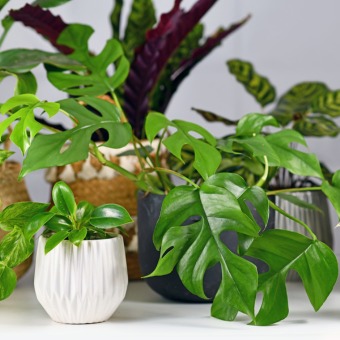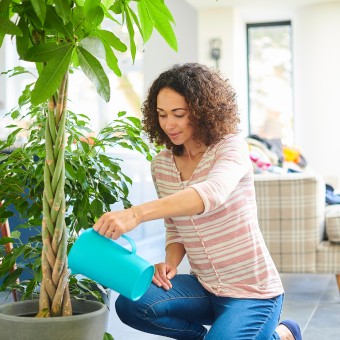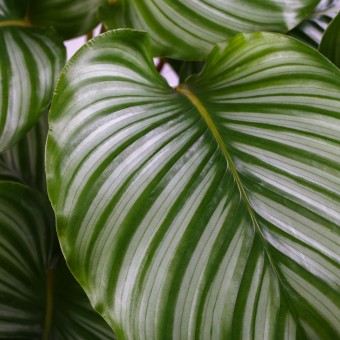-
Plant care in summer

As the scorching summer season is just around the corner, bringing with it extreme temperatures, it's essential to prepare your plants for the heat. In this article, we'll provide you with valuable tips and insights on how to properly care for your plants and ensure they thrive during the sweltering summer months.
Summer and winter are very similar because of one characteristic: their extreme temperatures, and as it is important to know, our plants require special care to keep them healthy and healthy. In the summer, the challenges that plants face shift from frost and extreme cold to more subtle threats. Instead, they must contend with intense sunlight, sweltering heat, and even the constant air conditioning that keeps our homes cool. As a result, it's essential to adjust our care routine to ensure our plants thrive during this season. Continue reading to learn how to provide optimal care for your plants in the summer months.

details to be considered
Many of our houseplants originate from subtropical regions, which can lead to a misconception - that they thrive in direct sunlight. However, these plants actually come from lush, shaded forests where the sun's rays are filtered and indirect. As a result, they're accustomed to partial shade and gentle, indirect light.
characteristics of each plant
For this reason, it is important to know the characteristics and care of each plant, as each plant may vary in its basic care for plants.

tips for caring for your plants in summer
Summer is approaching, and you've likely already made plans for your vacation. Whether you're stuck in a traffic jam on your way to the beach or enjoying a camping trip in the mountains, you'll surely be leaving your green mates behind. Don't forget about them! We've got some helpful tips to ensure you don't neglect your flatmates during your well-deserved break.
watering
Water more and better, although we know that high temperatures may require more water for the plants, we must be careful to water them correctly to avoid waterlogging. It is advisable to always touch the substrate with your finger and only water if it is very dry.
If the substrate is very dry, it is advisable to water slowly so that the water can enter the substrate properly and reach the roots. If watering is accelerated, the water will run off directly to the bottom without wetting the roots.
water according to pot type
It is important to note that pots with wide mouths and made of ceramic and other porous materials allow water to evaporate more quickly. However, narrow rimmed pots made of plastic material allow more moisture to be retained in the substrate.
During the summer, it also might be a good idea to install a drip irrigation system at home to deliver water directly to the roots of plants, reducing evaporation and runoff.

watering schedules
It seems a little strange but when the sun is shining, if you water, the water evaporates much more quickly and even the droplets left on the leaves can act as a magnifying glass with the sun's rays, causing burns on the plant. It is advisable to mark and respect the watering schedule and to water in the morning or in the afternoon when the sun goes down..
location of the plants
The location of the plants is a crucial detail. Avoid placing your indoor plants in direct sunlight, as this can cause sunburn. It is advisable for them to receive plenty of light, but indirectly, so that they can make better use of it. On the other hand, protect them from air conditioning, as the cold, dry air can cause damage to your plant.
tricks for the heat
Another trick is to avoid placing them too close to the walls as they radiate the heat they receive from outside. To dissipate the radiated heat you can also use the double pot technique, which consists of placing the pot in another larger pot so that it can absorb the heat radiating from the outside and thus keep the smaller pot cooler.
pruning, fertilising and transplanting
mudanzas
Plants tend to grow a lot in spring, so you can check if they need to be repotted. It is also advisable to remove any dry leaves, flowers or branches as these absorb some of the plant's moisture and nutrients, which can be used to improve its development.
feed your plant with fertiliser

In this season it is advised that this is the time to add more compost and fertiliser to the substrate as many of them flower in this season.
Choose the right fertiliser, as the right fertiliser makes the plant more resistant to diseases, pests and insects.
protect your plant from bugs
Don't neglect the health of your plant. In summer there are also pests and insects that will want to take advantage of the freshness of your plant. It is important to inspect your plants frequently and to spray at any sign of pests.
visit our website
Now that we are entering the spring and summer seasons, take a look at our website where you can find a variety of flowering and non-flowering plant species, it's time to put some new plants in your garden or space where you want them.
👍🏼👍🏼